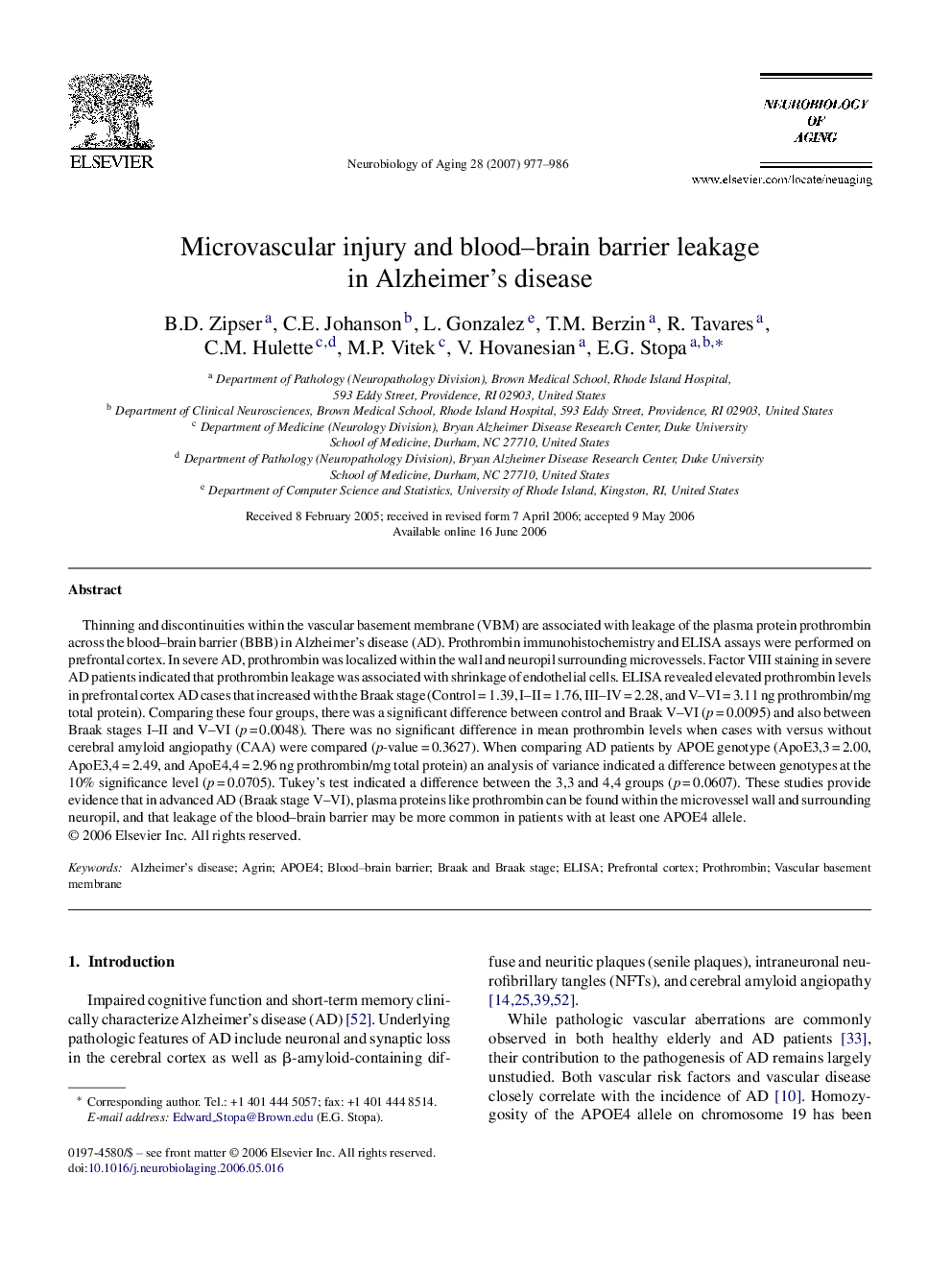| Article ID | Journal | Published Year | Pages | File Type |
|---|---|---|---|---|
| 331252 | Neurobiology of Aging | 2007 | 10 Pages |
Thinning and discontinuities within the vascular basement membrane (VBM) are associated with leakage of the plasma protein prothrombin across the blood–brain barrier (BBB) in Alzheimer's disease (AD). Prothrombin immunohistochemistry and ELISA assays were performed on prefrontal cortex. In severe AD, prothrombin was localized within the wall and neuropil surrounding microvessels. Factor VIII staining in severe AD patients indicated that prothrombin leakage was associated with shrinkage of endothelial cells. ELISA revealed elevated prothrombin levels in prefrontal cortex AD cases that increased with the Braak stage (Control = 1.39, I–II = 1.76, III–IV = 2.28, and V–VI = 3.11 ng prothrombin/mg total protein). Comparing these four groups, there was a significant difference between control and Braak V–VI (p = 0.0095) and also between Braak stages I–II and V–VI (p = 0.0048). There was no significant difference in mean prothrombin levels when cases with versus without cerebral amyloid angiopathy (CAA) were compared (p-value = 0.3627). When comparing AD patients by APOE genotype (ApoE3,3 = 2.00, ApoE3,4 = 2.49, and ApoE4,4 = 2.96 ng prothrombin/mg total protein) an analysis of variance indicated a difference between genotypes at the 10% significance level (p = 0.0705). Tukey's test indicated a difference between the 3,3 and 4,4 groups (p = 0.0607). These studies provide evidence that in advanced AD (Braak stage V–VI), plasma proteins like prothrombin can be found within the microvessel wall and surrounding neuropil, and that leakage of the blood–brain barrier may be more common in patients with at least one APOE4 allele.
